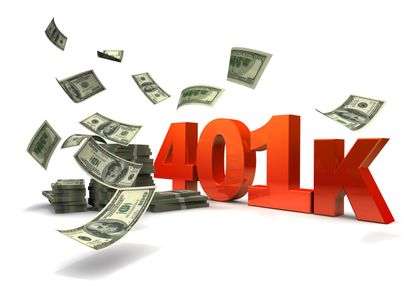Understanding the Different 401(k) Plan Options
With the landscape of retirement planning ever-changing, it’s more important than ever to have a solid grasp of 401(k) retirement plan options. Understanding the intricacies of these plans is pivotal, especially for those involved in 401(k) small business ventures. In this detailed guide, we navigate the essentials and intricacies of 401(k) plans, offering insights for anyone looking to cement their financial future.
Key Takeaways
- Understanding the different 401(k) plan types can help optimize retirement savings.
- Contributions, employer matches, and investment choices are pivotal in growing your 401(k).
- Being knowledgeable about fees, tax implications, and recent legislative changes can greatly benefit your retirement planning.
The Basics of 401(k) Retirement Plans
A 401(k) plan is a powerful tool in the retirement planning arsenal, primarily used in the United States. It’s a tax-advantaged savings scheme that allows employees to deposit a portion of their paycheck directly into a designated retirement account. These contributions are usually made before taxes are taken out, which can lower the overall taxable income for the year. Understanding the varieties of the 401(k), be it a traditional setup, a Roth 401(k), or a plan tailored for a 401(k) small business framework, is critical. Each type of plan comes with unique benefits, and knowing these can assist in making informed decisions that align with personal retirement goals.
Contributing to Your 401(k)
The compound effect of contributions over time cannot be understated; it is the bedrock of growing substantial retirement savings. A cardinal rule of thumb is to contribute enough to tap into the full extent of an employer’s match policy when available, as this represents additional funds that accumulate without any additional financial outlay on the part of the employee. The Internal Revenue Service also stipulates annual contribution limits, which one should aim to maximize. Catch-up contributions are a boon for those approaching retirement, offering the chance to bolster their savings by allowing additional contributions beyond the standard limits for those aged 50 and above.
Investment Choices Within 401(k) Plans
The investment options within a 401(k) play a quintessential role in determining the growth of one’s retirement savings. Selecting the right mix of stocks, bonds, and money market funds can define the portfolio’s performance. The ideal composition of these assets typically shifts as one age; younger individuals often afford greater risk for potentially higher returns, gradually moving towards more stable, income-generating investments as retirement nears. Diversification is a key strategy that can help mitigate risk and steady your investment journey, irrespective of market turbulence.
401(k) Fees and Expenses
Despite their benefits, 401(k) plans can be accompanied by various fees that may silently wear down the total retirement corpus over time. These could range from administrative fees covering plan management to investment fees tied to the specific funds within the portfolio. Often, these fees are a percentage of the assets managed and might seem negligible at first glance, but over the years, they can compound and consume a significant chunk of potential earnings. It’s crucial for plan participants to periodically review their plan’s fee disclosures, making sure to understand and, if possible, minimize these costs without compromising the quality and diversity of the investment options.
Loans and Early Withdrawals from 401(k)s
The 401(k) plan provisions often include the ability to take out loans or make early withdrawals, but these come with significant caveats. While borrowing from one’s 401(k) may provide a quick financial solution, it undermines the savings principle by reducing the invested capital, which, in turn, affects compound growth. Furthermore, early withdrawals incur taxes and penalties unless they qualify for one of the IRS’s exceptions. Sourcing funds from an emergency savings account or taking a personal loan are alternatives worth considering before disrupting one’s retirement nest egg.
Rolling Over a 401(k)
Job transitions present an opportunity to reflect on the future of one’s 401(k) account. Direct rollovers to a new employer’s 401(k) or an Individual Retirement Account (IRA) can keep funds growing and maintain their tax-deferred status. A rollover is typically preferred over cashing out, which can trigger taxes and penalties. The process requires attention to detail to ensure proper execution, particularly ensuring a seamless transfer of funds to avoid potential tax charges. Financial advisors can offer invaluable guidance during this process, ensuring one’s retirement savings thrive in their new home.
Planning for Retirement: Beyond the 401(k)
A fulsome retirement strategy extends beyond the singular focus on 401(k) plans. Individual Retirement Accounts (IRAs), both Traditional and Roth, along with health savings accounts (HSAs) and other investment opportunities, can complement the benefits of a 401(k). Striking a balance between current financial needs and future retirement aspirations requires a holistic approach to resource allocation. This may entail a nuanced balance between saving for the golden years, paying down debt, and maintaining an emergency fund, with each decision aligning with personalized financial targets and lifestyle aspirations.
Tax Considerations for 401(k) Plans
The impacts of tax on 401(k) plans are twofold; initial tax advantages can be garnered from reducing one’s taxable income through traditional pre-tax contributions, while Roth 401(k) options offer tax-free withdrawals, provided certain conditions are met. The distinctions between these two approaches have long-term implications and should be considered in the context of individual tax situations and retirement timing. The interplay between tax regulations and retirement savings is intricate and is often best navigated with the counsel of tax professionals or financial advisors.
The Future of 401(k) Plans
Legislative shifts and technological advancements often change 401(k) plans significantly. Being aware of such shifts is key to optimizing a retirement strategy. For example, the SECURE Act, passed by Congress, made headlines for altering crucial aspects related to 401(k)s, including age limits for contributions and required minimum distributions. Technological solutions such as financial planning apps and online platforms also reshape how individuals engage with and manage their retirement plans, providing enhanced accessibility and personalized insights.
Staying Informed and Making Wise Decisions
Keeping abreast of 401(k) updates, market trends, and broad economic indicators is vital for maintaining a robust retirement plan. Consider leveraging resources that can offer clarity and direction. Regular reviews of one’s retirement strategy are crucial, allowing for agile responses to new information and ensuring the path to retirement remains clear and steady. These periodic checks and a nuanced understanding of personal financial situations empower individuals to make informed decisions that resonate with their long-term financial wellness.
Stay in touch to get more updates & news on Discover Tribune!






